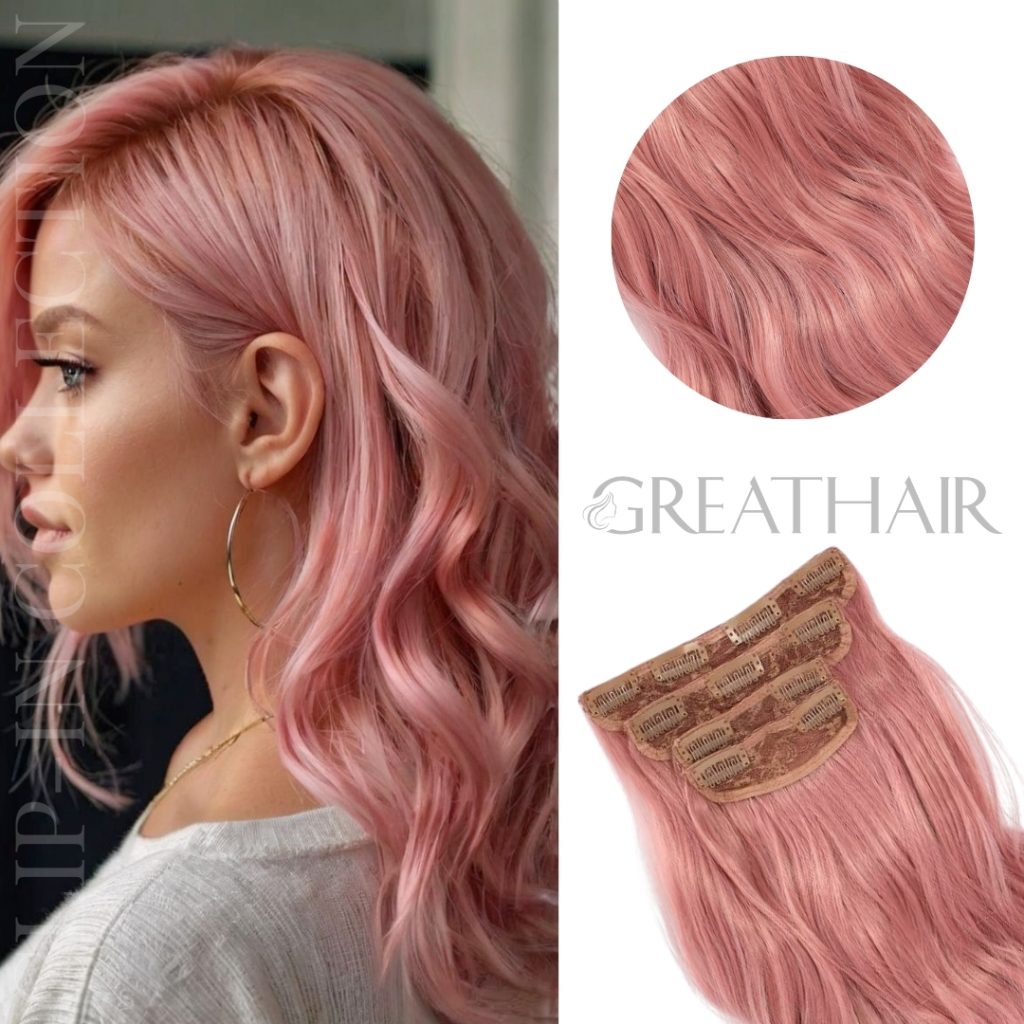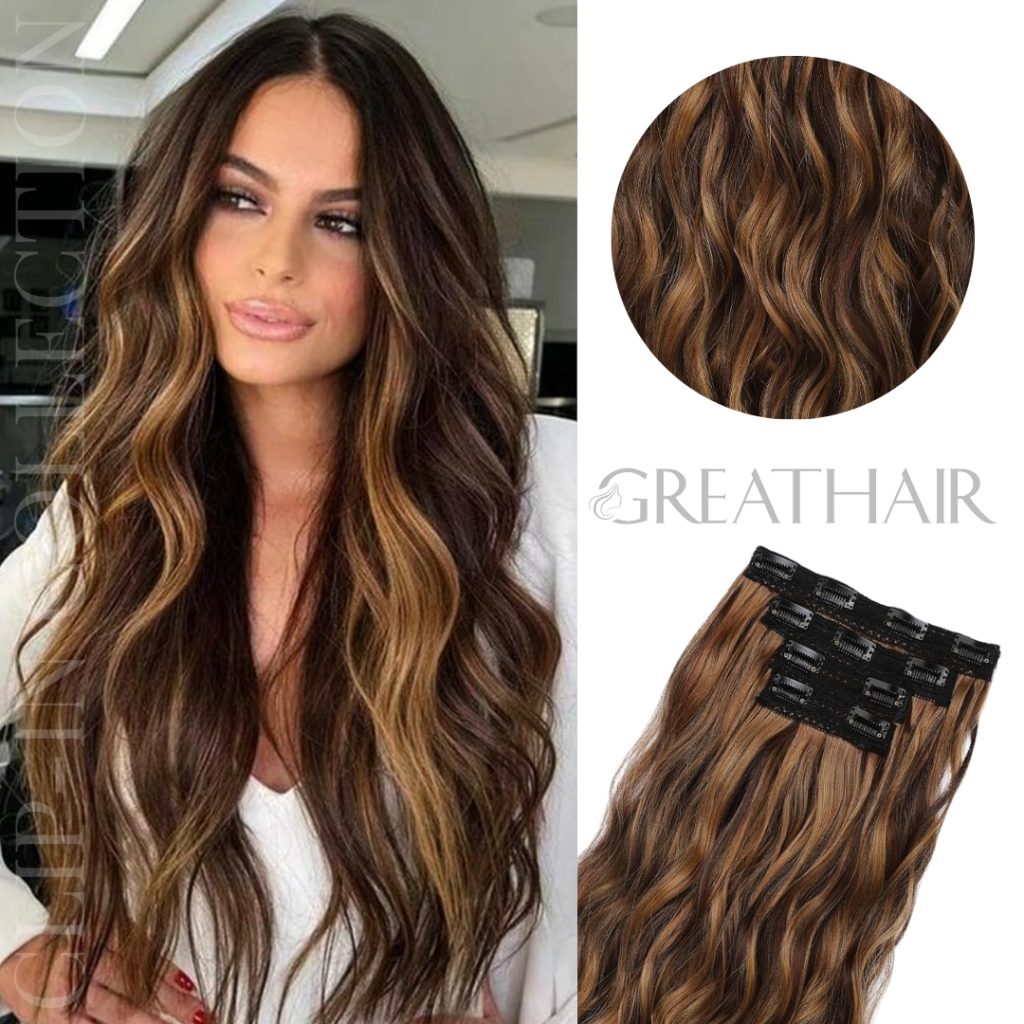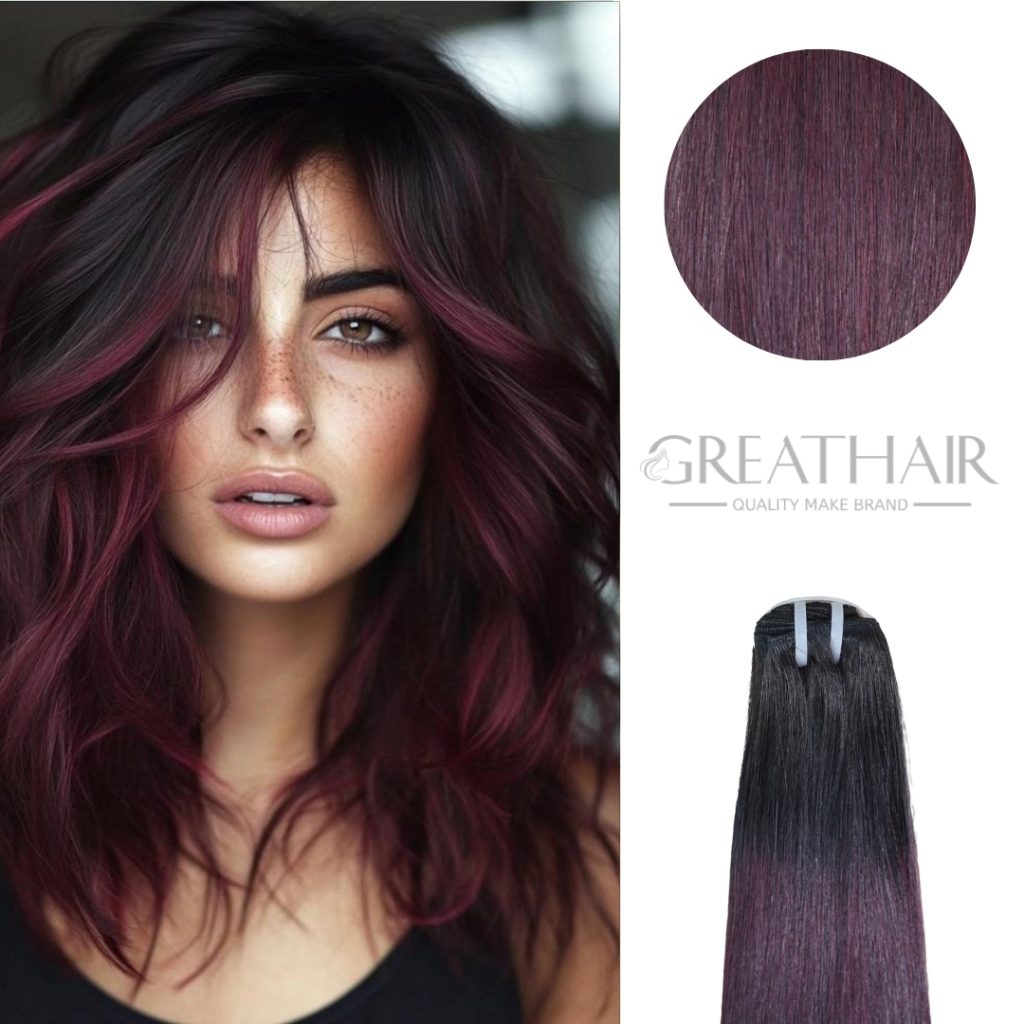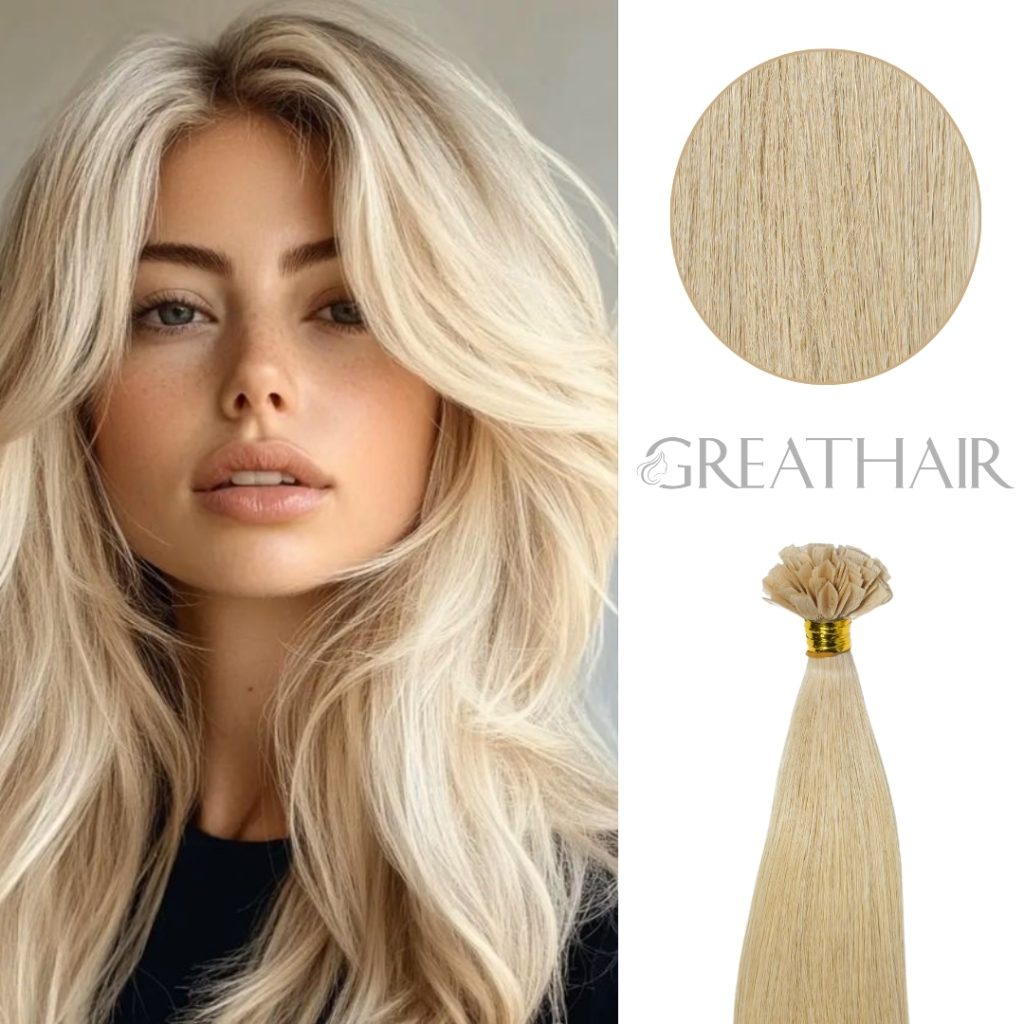
There are no products in the cart
Oct 10, 2025
Post by SEO Greathair
Itchy weave making you miserable? That constant scratching, especially at night, can turn your favorite protective style into a frustrating, uncomfortable experience.
Left untreated, an itchy weave can cause scalp irritation from weave, inflammation, product buildup, and even hair damage, making your chic look feel more like a burden than a beauty boost.
The good news? You don’t have to suffer through it. This guide from Great Hair breaks down exactly why your weave itches, how to fix it fast with proven treatments and products, and how to prevent the itch from coming back. Say goodbye to scalp discomfort and hello to irritation-free installs, starting today.
Keep reading to take control of your itchy weave with expert-backed solutions that soothe, protect, and prevent.

How Do I Stop My Scalp From Itchy Weave? 8 Best Tips
Itchy weave discomfort that worsens at night is a common and frustrating problem for many wearers. If you’ve ever wondered, why does my weave itch so bad at night, you’re not alone. That relentless itch creeping in just as you’re trying to fall asleep isn’t your imagination. When daily distractions fade, your scalp becomes hyper-aware of irritation, making the itch feel even more intense.
Let’s break down the hidden culprits behind your itchy weave, especially during nighttime hours.
Every spritz of oil sheen, dab of edge control, or pump of mousse adds up. While these products keep your weave looking sleek, they can clog your scalp, especially when your natural hair is braided underneath and has limited airflow. Trapped sweat, sebum, and residue combine to create irritation and inflammation, which can cause persistent itching that intensifies at night.
Weaves that are sewn in tightly or worn for extended periods can hold on to sweat and moisture, particularly in warmer climates or after workouts. That dark, damp space between your braids and the tracks? It’s the ideal environment for bacteria or fungi to thrive. The longer your scalp stays unwashed, the worse the itching becomes, especially once you lie down and your body temperature rises.
If you have a naturally dry scalp or conditions like dandruff, eczema, or seborrheic dermatitis, wearing a weave can make symptoms flare up. Without regular access to moisturize your scalp, skin underneath can become dry, flaky, and inflamed. The result? A tight, itchy feeling that becomes more noticeable during those still, quiet hours of the night.
Not all weave hair is gentle on your skin. Many synthetic fibers are coated in chemicals during manufacturing, some of which can trigger itching, burning, or even allergic reactions. If you’ve installed a quick weave and felt like your scalp was on fire, or if your quick weave itching like crazy, synthetic hair could be the cause.
Sometimes, it’s not the hair, it’s how it was installed. Tight braids and weaves that pull too hard on the scalp can cause nerve sensitivity, leading to an itchy or tingling sensation. Over time, this tension can inflame your scalp, lead to bumps, and potentially cause traction alopecia if left unaddressed. If your itch started right after your install, the tightness could be to blame.

Chocolate Brown with Golden Highlights Wavy Clip-In Hair Extensions
Whether the itchy weave is terrible or you’re scratching non-stop, effective itchy weave treatment can soothe your scalp quickly without removing your style. If you’re wondering how to relieve itchy hair extensions, continue scrolling.
The key to instant relief is accessing your scalp directly. That’s easier said than done when it’s tucked under tracks or a closure, but with the right technique and tools, you can clean and calm your scalp without disrupting your install.
Start with a pointed-tip applicator bottle filled with a soothing solution:
Apply the solution directly to your scalp by parting the weave with your fingers. Focus on the most irritated or itchy areas, and allow it to sit for 5–10 minutes. Then gently blot the area with a clean cotton pad or towel to lift away residue, sweat, and product buildup.
Tools That Help:
These tools not only provide access but also stimulate circulation, which can help calm nerve endings that trigger the itch.
If you prefer a natural route or need a fix right now from items in your pantry, these tried-and-true DIY scalp treatments can provide real results with minimal effort.
Apple Cider Vinegar Rinse
One of the best natural remedies for itch and buildup. ACV restores your scalp’s pH balance while removing trapped residue.
How to Use:
Peppermint or Tea Tree Oil Blend
Both peppermint and tea tree oils are powerful anti-itch agents—but they’re strong, so always dilute them.
How to Use:
Witch Hazel Quick Treatment
Great for those hot, humid nights when your scalp feels sweaty and inflamed.
How to Use:
While the quick fixes above give you fast relief when the itchy weave hits, lasting comfort comes from consistent scalp care. Think of these methods as the follow-up to your instant relief helping you stay itch-free between flare-ups and making each install more comfortable from day one.
Use these strategies as part of your weekly weave care routine or during breaks between installs to prevent the itch cycle from returning.
Keep your scalp hydrated without clogging follicles.
Best Moisturizers:
Apply sparingly with a dropper or spray bottle to avoid buildup.
Prevent mechanical irritation that leads to long-term itching and damage.
What to do:
Pro Tip: A silk bonnet or silk pillowcase helps reduce friction and nighttime scalp stress.
Give your scalp recovery time between protective styles.
What to do:
Take at least 1–2 weeks off between weaves
During the break:
This helps reset your scalp, reduce inflammation, and prevent future itchiness.

The Ultimate Guide To Choosing Weft Hair Extensions
The best solution is prevention. Here’s how to stop the itch before it even starts.
Always wash and deep condition your hair before installing a weave. Use a clarifying shampoo or a gentle itchy weave shampoo designed to cleanse without irritating your scalp, removing dirt, oil, and old product buildup.
For extra scalp care:
Your stylist should braid your hair tightly enough to secure the weave but not so tight that you feel pain or pulsing. Communicate clearly with them and don’t be afraid to speak up if it feels too tight. A good stylist will prioritize your scalp health over aesthetic tension.
The quality of your hair extensions significantly impacts scalp health. Low-grade synthetic hair often contains chemical coatings and preservatives that can cause itching, irritation, or allergic reactions. To ensure comfort and reduce the risk of scalp issues, it’s crucial to invest in premium-quality extensions.
Great Hair stands out as a leading supplier of 100% raw, virgin Vietnamese human hair. Sourced from single donors, Great Hair extensions offer unmatched consistency, strength, and natural texture . This ensures that the hair blends seamlessly with your natural hair and maintains its integrity over time.
No matter how well you care for your itchy weave, there comes a point when your scalp needs a break. Ignoring warning signs can lead to serious irritation, follicle damage, or even long-term hair loss. While treatments help, sometimes the most effective solution is to remove the install and give your scalp time to recover.
These can be signs of folliculitis, a bacterial or fungal infection that forms when hair follicles are clogged with sweat, oil, and product buildup. If left untreated under a weave, it can worsen and potentially cause scarring or permanent follicle damage.
A sour or musty smell when scratching or parting your hair often indicates that bacteria or mildew has built up beneath the weave. This is especially common if your braids were not fully dried after washing. It’s a strong sign that your scalp environment is no longer healthy.
Persistent flakes or scalp inflammation or scaly patches may mean your scalp is overly dry, irritated, or reacting to buildup and tension. If you’ve tried moisturizing treatments without success, your scalp may need full exposure to air and a deep cleanse, neither of which are possible while the weave is in place.
If you’ve already tried scalp mists, oil blends, vinegar rinses, or medicated shampoos and are still scratching frequently, your scalp may be inflamed and unable to breathe. Continued scratching under a closed weave environment can make things worse and increase the risk of infection or inflammation.
When you begin to feel pulling, soreness, or strain, especially around the hairline or nape, it could be a result of tight braids or new growth tugging against the weave. This kind of tension can lead to traction alopecia, a type of hair loss caused by prolonged stress on the follicles.
If you’re approaching the two-month mark and experiencing any of the signs above, it’s time to take the weave out. Removing it can prevent further issues and give your scalp the recovery time it needs to stay balanced and healthy.
Tip: After taking down your weave, give your scalp a break for at least a week. Cleanse it thoroughly, keep it moisturized, and massage it gently to restore circulation. When you’re ready to reinstall, choose quality bundles from Great Hair to minimize irritation and maximize comfort with every wear.

Hair Extensions For Hair Loss Exploring The Art of Concealing
Weaves are meant to be a form of self-expression, convenience, and protection, not a source of discomfort. With the right preparation, care, and product choices, you can enjoy a flawless look without the itch. Don’t suffer in silence, if your weave is driving you crazy, it’s your scalp’s way of asking for attention.
We Will Contact You Shortly